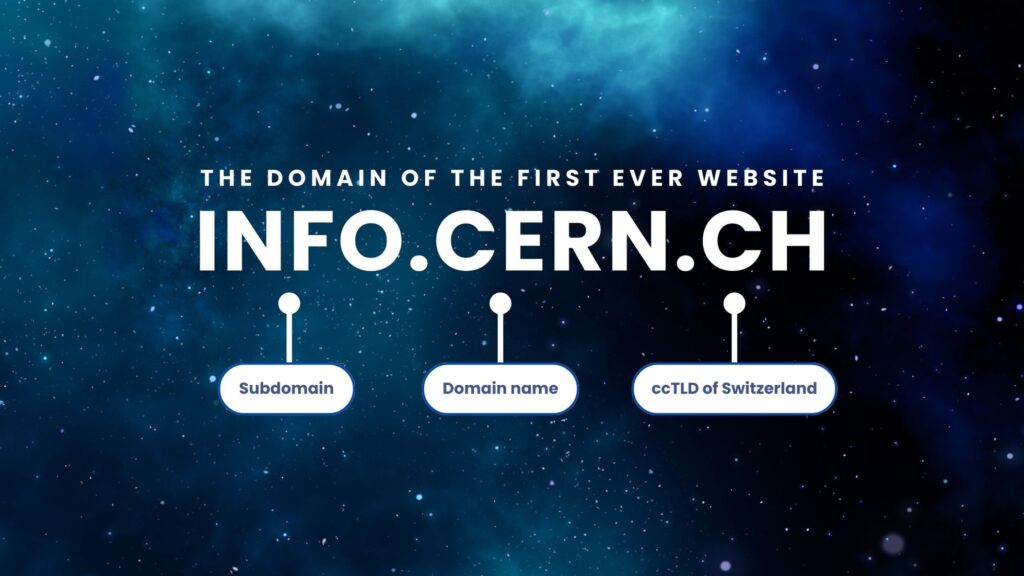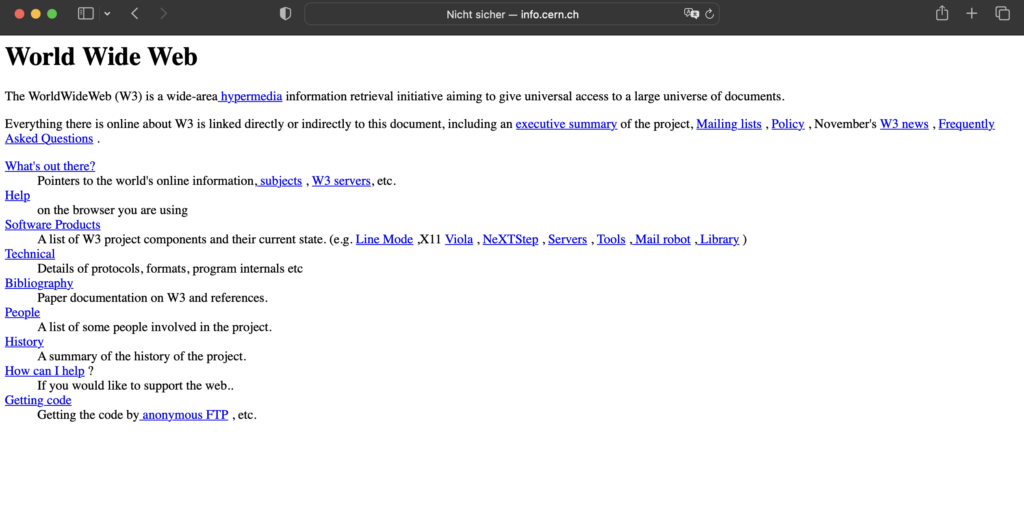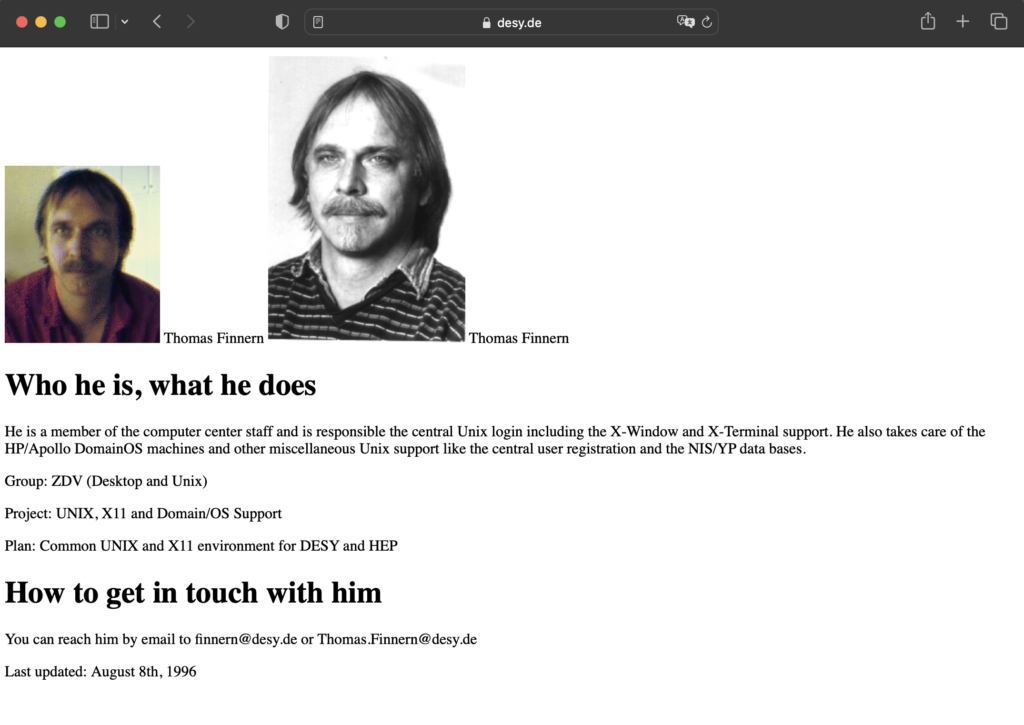When we talk about domains today, most people immediately think of websites. However, domains existed long before these. However, the rise of websites only began in the early 1990s – in Switzerland:
Tim Berners-Lee published the first website in 1991 at the nuclear research institute CERN and chose the domain info.cern.ch. The top-level domain of the very first website was .CH, as CERN’s headquarters are located in Switzerland.
You can find out the background to the website and its domain in this article.
The history of the first website and its domain
This article is part 3 of our series on the history of the domain. Here is a brief history of the most important developments:
- 1968 – Launch of the ARPANET
- 1971 – Introduction of e-mail
- 1983-85 – The DNS and the first top-level domains are introduced (Part 1)
- 1985 – The first domains are registered (Part 2)
- 1991 – The first websites are created (Part 3)
How the website was invented
The websites originated at the European nuclear research center CERN (Conseil Européen pour la Recherche Nucléaire). The physicists there had a problem: it was complicated to exchange large amounts of data with colleagues. At that time, there were still many different network infrastructures.
In 1989, computer scientist Tim Berners-Lee finally developed a solution to facilitate the exchange of information between researchers: websites and the World Wide Web.
Together with his colleague Robert Caillou and a small team, they developed the markup language for creating websites (HTML) as well as web servers, web browsers and the HTTP protocol to enable these websites to be accessed from anywhere.
Berners-Lee put the world’s first website on the web on December 20, 1990. It was published on August 6, 1991.
The domain of the world’s first website

The domain of the world’s first website is info.cern.ch. It can be found at the following URL: http://info.cern.ch/hypertext/WWW/TheProject.html
As can be seen from this URL, the content of the site was an overview and guide to the World Wide Web project, which was based on hypertext. It contained detailed information on how to use the web.
From the home page called “World Wide Web”, hyperlinks provided further information such as frequently asked questions, the software and the people involved in the project.
The website has since been removed from the Internet. But for the 20th anniversary of the World Wide Web, the CERN research center has put it back online exactly as it looked in the last available version from 1992:

How did the top-level domain of the first website come about?
As described in Part 1 of our domain history, the first generic (e.g. .COM, .ORG, .NET) and the first country-specific domain extensions (e.g. .US, .UK, .DE) were introduced in the 1980s. These were available at the beginning of the 90s.
Although the .COM domain dominates today with an impressive distribution of almost 50%, it was not the choice for the world’s first website.
In a memo (RFC 1480) from 1990, you can read that at that time, almost only people from the US were registering domain extensions such as .COM (for businesses) and .EDU (for educational institutions). In other countries, however, domains were initially registered almost exclusively under their own country-specific domain extension.
For CERN, too, the geographical location was the decisive factor in choosing the .CH extension. Although CERN spans two countries – France and Switzerland – the institution’s headquarters are located on the Swiss side near Geneva.
The domain of the first German website
In Germany, the first website went online in September 1992 under the domain apollo3.desy.de.
It was put online by IT engineer Thomas Finnern at the Deutsches Elektronen-Synchrotron (DESY) in Hamburg after he had exchanged ideas with Tim Berners-Lee from CERN.
DESY is a German research center for particle physics and has been one of CERN’s closest cooperation partners since it was founded in 1959. Thanks to this collaboration, Finnern learned about the new technology early on and decided to create an experimental website for his research center himself.
As DESY was located in Germany, the domain extension .DE was used. The term “apollo3” referred to the third model of the Apollo domain machine – the computer on which Finnern set up the web server and his website.
A year later, after the website was out of the experimental stage, the domain was changed to info.desy.de, following the example of CERN.
Today, the original website is no longer online. But a version from 1996 is still available at desy.de/~finnern/:

Other early websites
After CERN’s website, other websites gradually emerged – initially mainly at universities and other physical research institutions that were in contact with CERN.
According to CERN’s oldest server list from 1992, in addition to the DESY website, the following were among the oldest:
- hoohoo.ncsa.uiuc.edu (National Center for Supercomputing Applications in the USA)
- granit.dtb.dk (Technical Library of Denmark)
- iicm.tu-graz.ac.at (Graz University of Technology in Austria)
- nic.nikhef.nl (Dutch Center for High Energy Physics)
- next2.cis.uni-muenchen.de (Center for Information and Language Processing at the University of Munich)
Today, CERN has its own top-level domain: .CERN
In 2014, CERN finally received its own domain extension. Today, the research institution’s homepage can no longer be found at cern.ch, but at home.cern.
This was made possible thanks to the decision to approve new generic TLDs by ICANN (Internet Corporation for Assigned Names and Numbers). In 2011, applications could also be submitted for company and brand TLDs, among others. CERN decided to do so in order to support its web communication strategy.
The .CERN extension was then set up in the DNS in 2014. One year later, in October 2015, the main website moved to the new address home.cern.
In addition to the homepage, visitor information can now be found at visit.cern and information on research experiments at atlas.cern and cms.cern, for example.
However, the original domain with the Swiss ending has not been abandoned – CERN continues to use it for internal websites and the IT infrastructure.
Do you still have questions?
This article is part 3 of our series on the history of domains. You can also take a look at Part 1 on the first top-level domains and Part 2 on the first registered domains.
And if you still have questions, just send us an email to blog@inwx.de.

